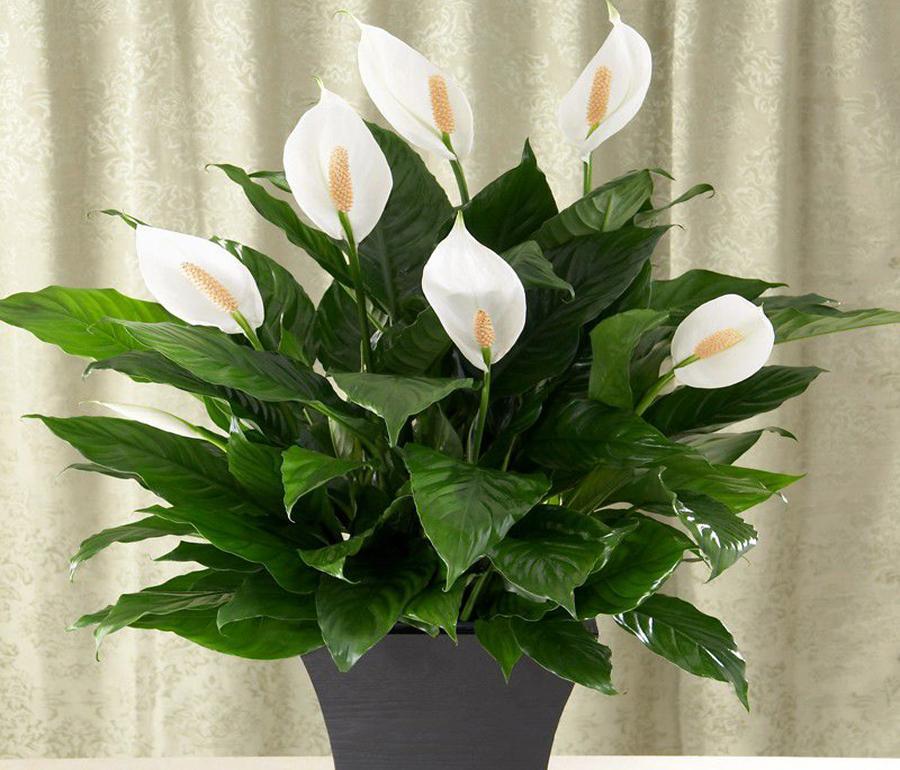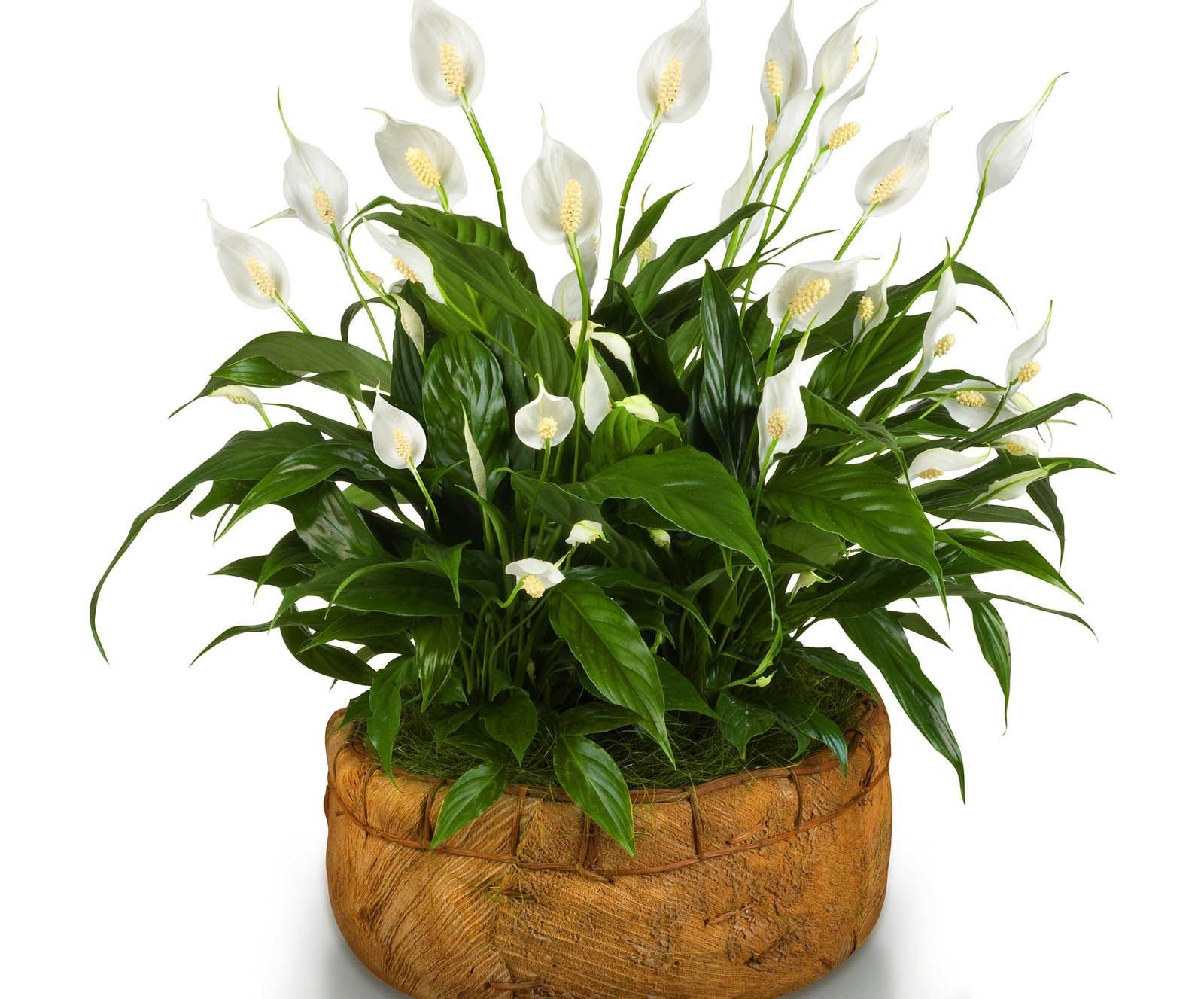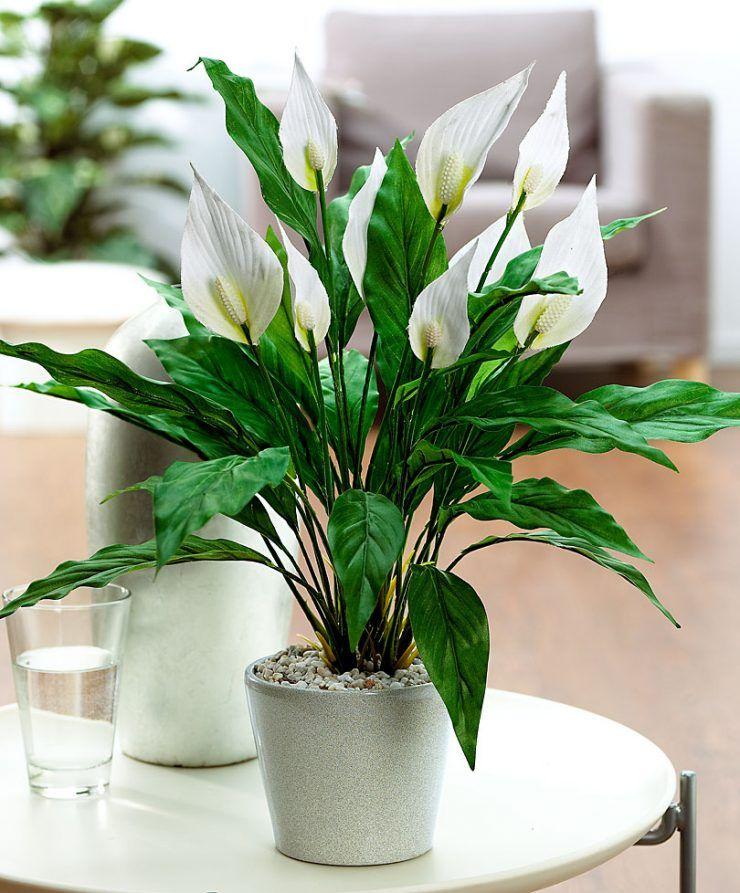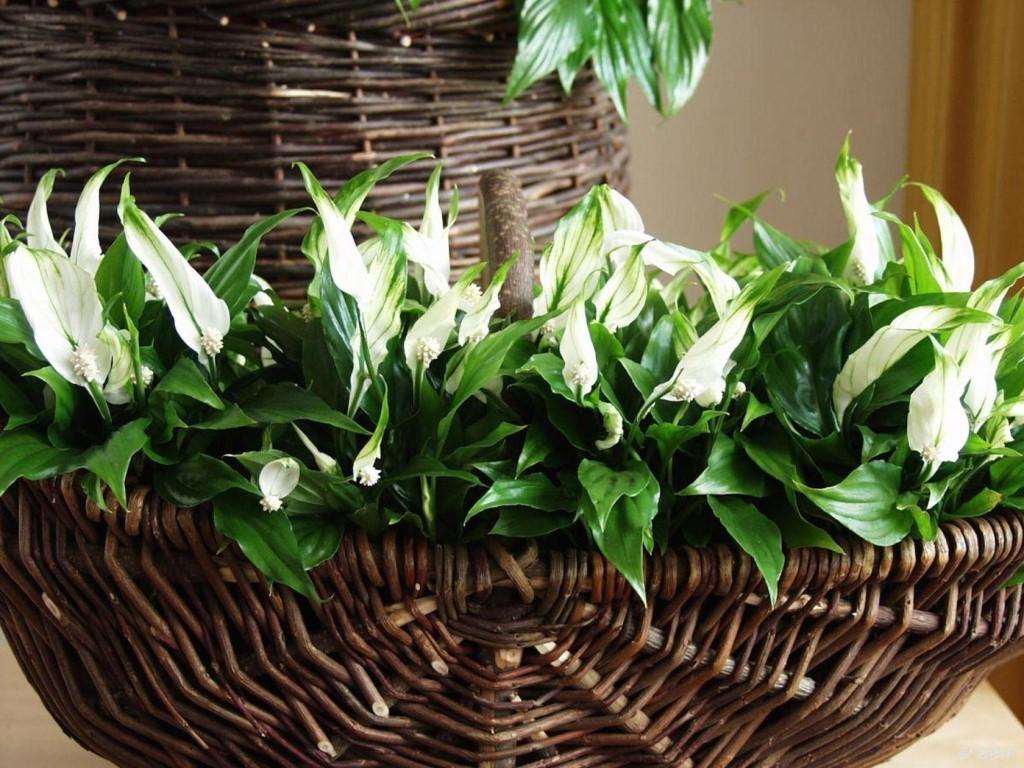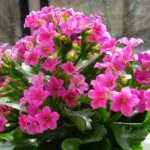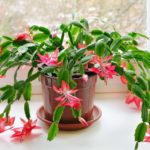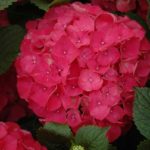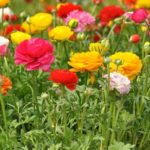“Women's happiness” is a flower that botanists call spathiphyllum. This plant is often used to decorate houses and apartments. The culture pleases its owners with beautiful snow-white flowers of unusual shape and does not require specific care. At the same time, to obtain a strong and healthy plant, you still need to adhere to some rules of agricultural technology.
Description of the plant
Spathiphyllum is often popularly called “women’s happiness.” This culture belongs to the Araceae family.The scientific name of the plant comes from two Greek words. "Spata" translates to "blanket" and "phyllum" means "leaf". This is associated with the unusual appearance of the plant’s flower. It resembles an ordinary white leaf. A distinctive feature of spathiphyllum is the absence of a stem. Therefore, the leaves form a bunch that grows directly from the soil.
The flower is characterized by a not too long root system. The leaves have an oval shape. In this case, there is a clearly defined vein in the center. The foliage is elongated and has a dark green color.
The inflorescence looks like an ear, which is located on a long stalk. There is a white blanket near the base, which turns green over time. The inflorescence itself has a cream and light pink hue. The average height of an indoor bush is 30 centimeters. In this case, there are tall and low specimens. Spathiphyllum blooms from spring to July. However, sometimes the buds open again in the fall.
How to care for it
Spathiphyllum is an unpretentious culture that does not require specific care. However, some rules of agricultural technology still need to be followed.
Choosing the right temperature
The optimal temperature for spathiphyllum is +18-25 degrees.In summer, indoor parameters should not be higher than +25 degrees. In winter, a decrease to +16 is possible. If the temperature drops to +14 degrees and below, there is a risk of developing diseases and even death of the crop. If the parameters are less than +18 degrees, there is a high probability of slowing down the development of the flower.
Lighting
One of the main requirements for caring for an indoor flower is sufficient illumination. If daylight hours become shorter, spathiphyllum needs artificial lighting.
In the summer, the flower pot needs to be placed in a place with diffused sunlight. Otherwise, there is a high probability of burns on the leaves.
What kind of soil should it be?
Spathiphyllum is considered a tropical crop that does not withstand stagnant moisture. At the same time, severe drought is also harmful to the flower. To avoid such problems, it is important to choose the right soil.
You need to add a layer of drainage to the bottom of the pot, which will help avoid excessive soil moisture. To do this, you can use foam or ceramic fragments. To plant spathiphyllum, loose soil with a slightly acidic reaction should be used. The best option would be a ready-made substrate and drainage for growing tropical or aroid plants.
How to water a plant
Homemade spathiphyllum is considered a relative of tropical crops, so it needs a sufficient amount of moisture. In the summer, when caring for the plant, you need to follow the watering norms. During this period, the soil should be moistened 2-3 times a week. It is important to avoid stagnation of moisture in the pot.
It is imperative to monitor the degree of soil moisture. By the next watering, the top layer of soil should be dry. It is important that the pot has holes and good drainage. At the same time, you need to avoid too much watering.
Top dressing
The ideal substrate for planting spathiphyllum is the preparation of which requires mixing turf, leaf soil, peat soil, humus and sand in a ratio of 2:1:1:1:1. In this case, it is permissible to use another substrate, but it must be loose and fertile. Too heavy soil will cause stagnation of moisture and rotting of the roots. Additionally, drainage must be provided.
Nutrients must be added regularly. This is considered the key to successful flowering of the crop. From spring to autumn, the crop needs to be fertilized once every 2 weeks. In winter, one feeding per month is enough.
It is best to use organic fertilizers to feed spathiphyllum - a solution of bird droppings or mullein. You can also purchase a complex product. This should be done in specialized stores.
Trimming
After flowering ends, it is necessary to cut off the peduncle so that it does not absorb nutrients. It is recommended to do this closer to the rhizome. You should also remove dried and diseased leaves of the crop. In this case, the cuts need to be powdered with crushed coal.
First steps after purchase
Usually the plant is sold in a technical pot, which is not suitable for permanent cultivation. Approximately 2-3 weeks after adaptation, the flower should be transplanted into a large container filled with fresh substrate. Since the plant develops normally in moist soil, it needs to be watered after purchase.
When choosing a location, you should give preference to the northern window sill. In this case, it will be possible to achieve optimal illumination and avoid overheating of the spathiphyllum. To simplify the adaptation of a flower to new conditions, immediately after purchase it should be moved to a dark place.If the spathiphyllum is in bloom at the time of purchase, it is recommended to wait until this process is completed. Only after this the flower can be replanted.
How to propagate a flower
The crop can be propagated in different ways - by cuttings, dividing the bush or by seed. It is recommended to root spathiphyllum by cuttings in damp sand. If you provide the correct water or temperature conditions, roots will appear quite quickly. After this, the cutting can be transplanted into a pot and even a greenhouse can be made for it.
It is recommended to propagate spathiphyllum by division in the spring. At this time, new growth points are formed on the stem, from which rosettes of leaves grow. It is useful to divide the bush from time to time to avoid thickening. On the shoot you need to leave 3 leaves with a growing point. For planting, you need to make a substrate. It should consist of sand, humus, peat and leaf soil. To improve drainage, crushed brick can be added to the composition. It is also permissible to add a little coniferous soil to the planting substrate.
Nuances during transplantation
The flower needs to be replanted once a year in the spring. In this case, you need to take a slightly larger pot. However, it should not be too voluminous. Until the spathiphyllum reaches 5 years of age, it needs to be replanted. After this, you need to focus on the condition of the roots.Replanting is required when shoots begin to peek out of the drainage holes. If the height of the bush is no more than 40 centimeters, and the diameter of the container reaches 20 centimeters, it is enough to replace the surface layer of soil.
Before transplanting, the flower needs to be watered. If you additionally remove the side shoots, all forces will be directed to the development of foliage. She will become large and beautiful. When moving to a new container, it is necessary to add a drainage layer. Its thickness should be 2 centimeters. Then you need to lay out a few centimeters of fresh substrate.
Flower transplantation is carried out by transshipment. This means that the bush is moved with a lump of soil. Since the plant is transplanted into a moist substrate, it does not need to be watered for 3-4 days. Then it is enough to simply spray the crop.
Problems during cultivation
One of the common problems when growing a plant is the lack of flowering of the crop. This may be due to the following factors:
- The temperature in the room is too low or the humidity is insufficient. Most often the problem is due to a combination of two factors.
- Fertilizer shortage.
- Natural aging of culture.
- Pot too big. Spathiphyllum blooms only if the root system completely fills the pot.
Also, when growing spathiphyllum, the following problems may arise:
- The leaves turn black and dry out. In this case, the reason lies in the incorrect irrigation system. This may be excessive or, conversely, insufficient watering. Lack of nitrogen or phosphorus is also a provoking factor.
- The leaves are turning yellow. The cause may also be insufficient or excessive watering. In this case, you should carefully look at the leaves.The appearance of a yellow border is associated with the use of low-quality water for irrigation. The liquid must first be settled. The yellowness in the center is due to lack of lighting.
- The ends dry out. This may be due to a lack of moisture or increased dryness of the air. To do this, you need to take measures to increase the humidity in the room.
- The flower does not open completely. The reason may be the increased density of the soil, which prevents full air circulation.
Spathiphyllum is a common indoor plant that is grown by many gardeners. In order for a crop to develop normally and look decorative, it needs to be properly cared for.

